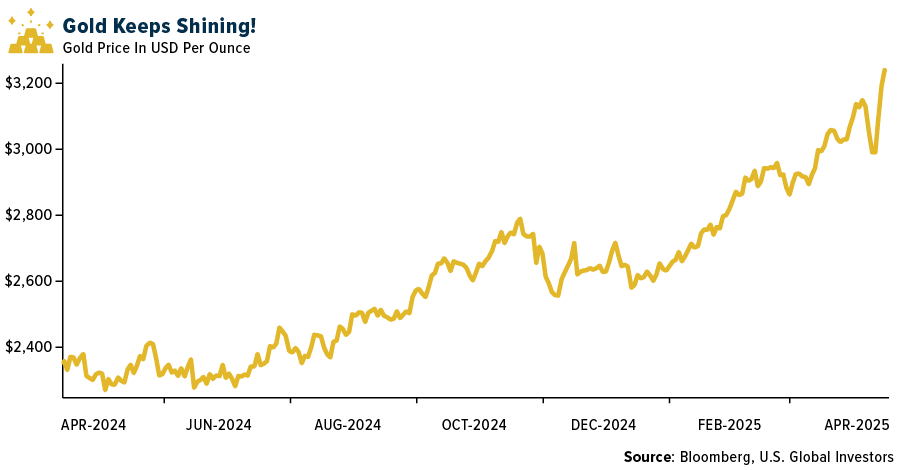Strengths
- The best performing precious metal for the past week was gold, up 9.35%. According to RBC, Regis Resources pre-released third quarter gold production of 90,000 ounces, driven by a 25% beat at Tropicana. Fiscal year 2025 year-to-date-rate of 381,000 ounces is tracking well versus the 350-380,000-ounce guidance.

- The World Gold Council released its central bank gold statistics for February 2025, which showed global central bank net purchases for the month totaling 24 tons. Top central bank purchasers were the National Bank of Poland (29 tons), the People's Bank of China (5 tons), and the Central Bank of the Republic of Türkiye (3 tons).
- Aris Mining reported first quarter 2025 gold production of 54,763 ounces, an 8% increase year-over-year, driven by positive trends at both the Segovia and Marmato operations. The company is on track to meet its full-year production guidance of 230,000 to 275,000 ounces, with further growth anticipated following the commissioning of the expanded Segovia processing facility in the second quarter of this year.
Weaknesses
- The worst performing precious metal for the past week was Palladium, still up 2.25%. Palladium prices have stalled due to tariff-related risk aversion, with Commerzbank reducing its year-end price forecasts to $1,000 per troy ounce for both palladium and platinum. Uncertainty over U.S. tariff policy is likely to negatively affect demand, particularly from the automotive industry due to tariffs on cars and car parts, reports Commerzbank.
- According to JP Morgan, PGMs have seen the bottom but bumpy path from here. Over the medium to longer term, they continue to see: slower BEV adoption and a PGM basket price that has traded at close to cost curve support.
- Osisko announced preliminary GEOs of 19.0k ounces, a bit below their expectations of 21.4k ounces for the quarter, reports BMO. Overall, revenues for the first quarter 2025 were $54.9 million while cost of sales, excluding depletion, was $1.6 million.
Opportunities
- Gold equities at spot gold are trading in line with the one-year historical average P/NAV, but larger discounts versus longer-term historical levels, according to RBC. At spot gold prices, equities are trading at 0.99x P/NAV. On a one-year basis, the sector traded at an average 1.06x, or 1.26x on a three-year basis.
- As market disorder increases, gold is emerging as a haven, decoupling from its traditional inverse relationship with U.S. real yields, according to Bloomberg. In an environment where Treasuries and the dollar are behaving erratically, gold's appeal transcends traditional barriers, attracting broader demand, including central bank buying, as central banks around the world have continued to buy.
- New Gold announced the acquisition of the remaining 19.9% free cash flow interest (FCF) in New Afton held by the Ontario Teachers’ Pension Plan for $300 million, with New Gold controlling 100% of the mine on deal close. The company previously acquired 26% of the FCF interest in the mine for $255m in May 2024 with gold 20% lower at $2,400 per ounce, explains RBC.
Threats
- Barrick Gold Corp. has approved plans to develop the Reko Diq copper-and-gold project in Pakistan, subject to the closure of a $3 billion funding package. The miner owns a 50% stake in the project, which is one of the world’s largest untapped sources of copper and gold. The remaining stakes are held by the governments of Pakistan and Balochistan, a remote province of Pakistan bordering Afghanistan and Iran, where the project is located, according to Bloomberg.
- Spikes in gold industry margins in both 2011 and 2020 were associated with negative total equity returns over the following three-year period. This is largely what Morgan Stanley would expect from the cyclical commodity sector.
- The surge in the gold-to-silver ratio signals growing recession fears, underscoring a potential threat to stocks as the ratio's increases have historically coincided with U.S. recessions, Bloomberg explains. Gold's outperformance, driven by its haven appeal amid trade tensions, suggests further upside potential for the ratio, adding to headwinds for stocks.

